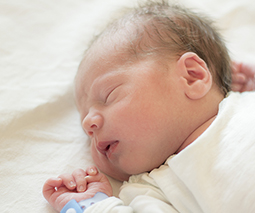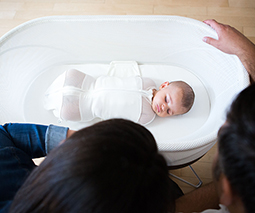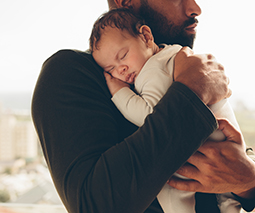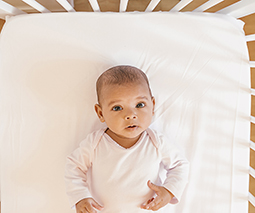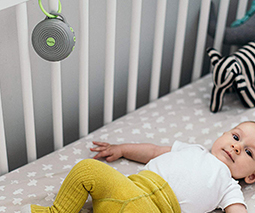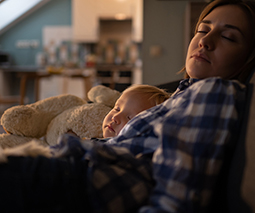How to teach your baby to self-settle
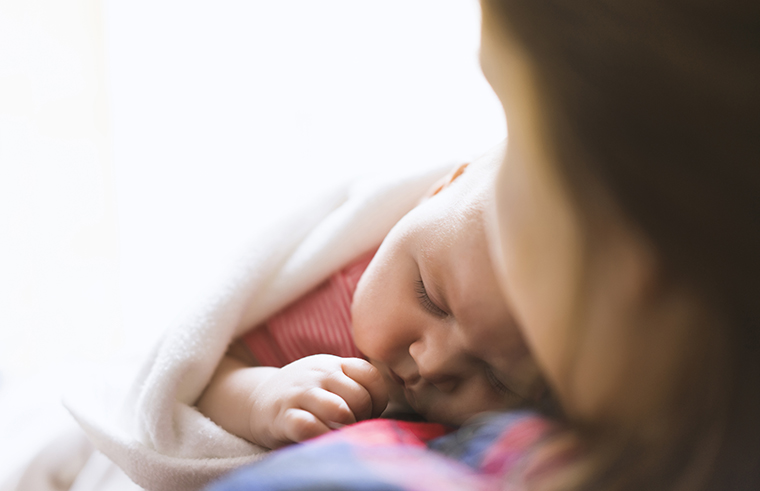
I have always believed that the concept of self-settling is a myth. After two kids and countless hours spent bouncing, rocking, swinging, shushing, driving and feeding my babies to sleep, I pretty much assumed that any mum who claims her infant self-settles to sleep is lying through her teeth. And then I saw it firsthand. Turns out, self-settling is not a myth. I was just doing it all wrong.
While I have absolutely nothing to bring to the self-settling table, my baby-whisperer friend has agreed to pass on her tips.
So … sleep-deprived parents everywhere, here is the advice you have been looking for.
What is self-settling?
It’s this magical thing where you place your baby down in a bassinet or cot sleepy, but awake … and they put themselves to sleep! There are different methods but often they involve leaving the room briefly and listening as your baby cries before falling asleep. This is something I couldn’t do.
Some experts recommend self-settling from the get-go, but others believe that parents should wait until their baby is four to five months old before giving any method a try.
My baby-whisperer friend and her dream baby used an approach similar to the gentle-infant-sleep method, which can take longer than some of the other methods, such as Cry It Out, but it involves less crying for everyone involved. If you have been feeding or rocking your baby to sleep or co-sleep, then this is also a great way to wean them off this and to teach your baby to sleep independently.
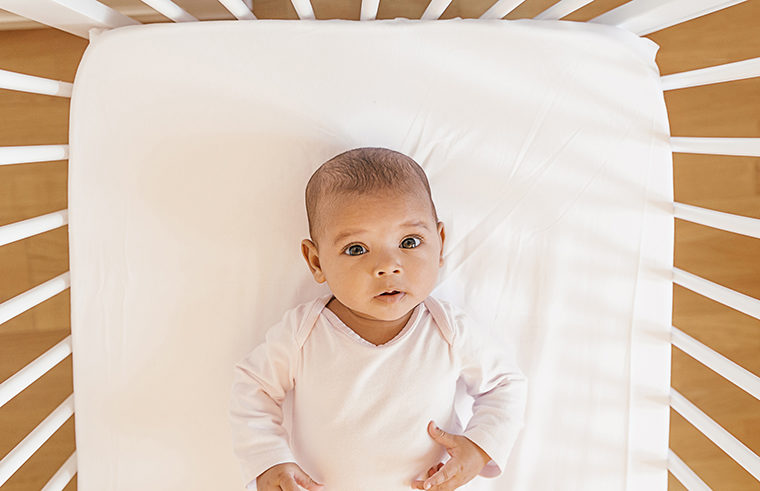
Here’s how you do it.
1. Set a routine
If you don’t already have one, then now’s the time. During the day, try to stick to the eat, play, sleep routine so your baby doesn’t get used to falling asleep while feeding. At night, stick to a bath, book, bed routine.
2. Introduce sleep associations
Yes, some experts say that sleep associations are no good, but, you know what else is no good? Having to pull out your breasts at the end of every 40-minute sleep cycle to put your baby back to sleep. So, sleep associations are okay in my books.
Some positive sleep associations include a white noise player, a sleeping bag or a comforter like a teddy bear. My friend uses a fan. She moves the bassinet so that it is underneath the fan, turns it on and her baby watches it until his little eyes shut.
3. Allow several days for baby to become attached to these sleep associations
Don’t try self-settling until they have a new sleep association and are comfortable with it, whether it’s a sleeping bag, a comforter or white noise.
4. Start moving baby off you
You are your baby’s sleep association right now. Your first step is to teach your baby she can actually fall asleep in bed, rather than on you. So if you currently rock your baby until she is asleep, change to only rocking baby until she is drowsy. Then put her into bed and pat her back until she falls asleep. This can take a few tries and several days.
5. Gradually reduce the rocking/bouncing/feeding
Once your baby can fall asleep in the cot after being rocked, it’s time to only rock your baby into a calm state. Allow your baby to get to the drowsy stage in the cot. You will still have to pat her to help bub reach the sleepy stage.
6. Almost there … take away the rocking/bouncing/feeding all together
Again, this isn’t going to happen overnight. Once your baby is comfortable enough with the cot, it will get easier for her to fall asleep without the need to rock. Gradually start to reduce the patting as well.
Confession time
Okay, here comes the confession. My daughter, who is now nearly three, still could not self-settle to sleep. She required me to tickle her, cuddle her or even rock her to sleep. And so I gave this approach a try. And five days later, I can actually read her a story, kiss her goodnight, tuck her in and leave the room!
It will likely take longer than five days for younger children, but it’s proof – self-settling isn’t a myth. It is a fine art, however, that takes patience, practice and dedication. But it can be done.
 Need some more baby sleep advice? Our Parent School baby sleep experts can help. Click to find out more or book a one-on-one session.
Need some more baby sleep advice? Our Parent School baby sleep experts can help. Click to find out more or book a one-on-one session.

